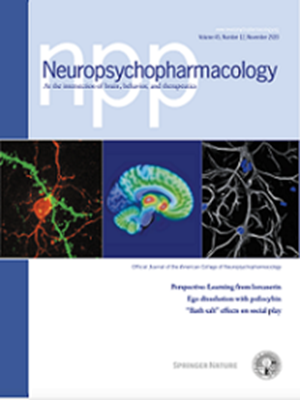尾标:一个多鼠标跟踪系统,用于测量复杂环境中的社会动态。
IF 6.6
1区 医学
Q1 NEUROSCIENCES
引用次数: 0
摘要
尽管最近取得了进展,但长期安全可靠地追踪个人活动,特别是在复杂的社会群体中,仍然是一项挑战。传统的方法,如颜色编码、标签和RFID跟踪,虽然有效,但有明显的实际局限性。最先进的基于神经网络的追踪器往往难以在大群体中保持个体身份超过几秒钟。基准标签(如ArUco代码)提供了一种潜在的解决方案,可以实现准确的跟踪和身份管理。然而,将它们应用于复杂、丰富环境中的大群体社会互动小鼠仍然是一个开放的挑战。在这里,我们提出了尾标系统,一种旨在解决这一挑战的新方法。尾标是一种非侵入性、安全、符合人体工程学的尾环,嵌入ArUco标记,允许在复杂环境中跟踪多达20只的单个小鼠至少7天,而不会导致性能下降或行为改变。我们提供了一个全面的参数优化指南和实用的建议,标记选择,在不同的实验设置的重复性。利用从配备尾标的小鼠收集的数据,我们揭示了群体内社会群体的形成和进化。我们的分析确定了动物体内的社会中心区域,在一周的录音中,社会接触以不同的频率发生。我们量化了在最活跃的社交中心中特定小鼠对之间的互动和回避模式。总的来说,我们的研究结果表明,虽然老鼠之间的区域偏好和同伴关系随着时间的推移而改变,但在社会群体中,某些群体和成对的互动始终形成。本文章由计算机程序翻译,如有差异,请以英文原文为准。

The Tailtag: A multi-mouse tracking system to measure social dynamics in complex environments
Despite recent advances, tracking individual movements safely and reliably over extended periods, particularly within complex social groups, remains a challenge. Traditional methods like color coding, tagging, and RFID tracking, while effective, have notable practical limitations. State-of-the-art neural network-based trackers often struggle to maintain individual identities in large groups for more than a few seconds. Fiducial tags such as ArUco codes present a potential solution to enable accurate tracking and identity management. However, their application to large groups of socially interacting mice in complex, enriched environments remain an open challenge. Here, we present the Tailtag system, a novel approach designed to address this challenge. The Tailtag is a non-invasive, safe, and ergonomic tail ring embedded with an ArUco marker allowing to track individual mice in colonies of up to 20 individuals in complex environments for at least seven days without performance degradation or behavioral alteration. We provide a comprehensive parameter optimization guide and practical recommendations for marker selection, for reproducibility across diverse experimental setups. Using data collected from Tailtag-equipped mice, we revealed the formation and evolution of social groups within the colony. Our analysis identified social hub regions within the vivarium where social contacts occur at different frequencies throughout one week of recordings. We quantified interactions and avoidance patterns between specific pairs of mice within the most active social hubs. Overall, our findings indicate that while the zone preferences and peer associations among the mice change over time, certain groups and pairwise interactions consistently form within the social colony.
求助全文
通过发布文献求助,成功后即可免费获取论文全文。
去求助
来源期刊

Neuropsychopharmacology
医学-精神病学
CiteScore
15.00
自引率
2.60%
发文量
240
审稿时长
2 months
期刊介绍:
Neuropsychopharmacology is a reputable international scientific journal that serves as the official publication of the American College of Neuropsychopharmacology (ACNP). The journal's primary focus is on research that enhances our knowledge of the brain and behavior, with a particular emphasis on the molecular, cellular, physiological, and psychological aspects of substances that affect the central nervous system (CNS). It also aims to identify new molecular targets for the development of future drugs.
The journal prioritizes original research reports, but it also welcomes mini-reviews and perspectives, which are often solicited by the editorial office. These types of articles provide valuable insights and syntheses of current research trends and future directions in the field of neuroscience and pharmacology.
 求助内容:
求助内容: 应助结果提醒方式:
应助结果提醒方式:


